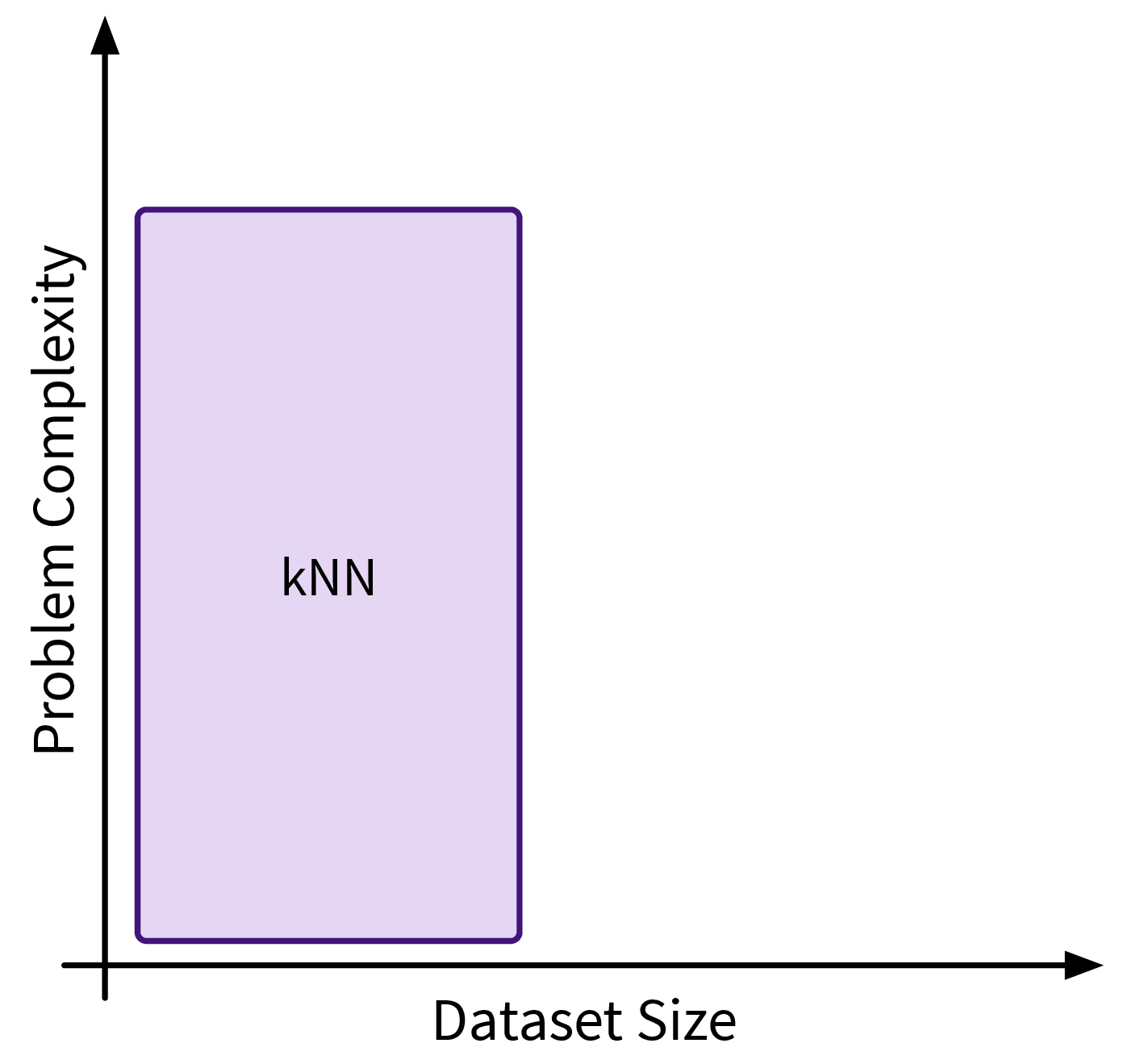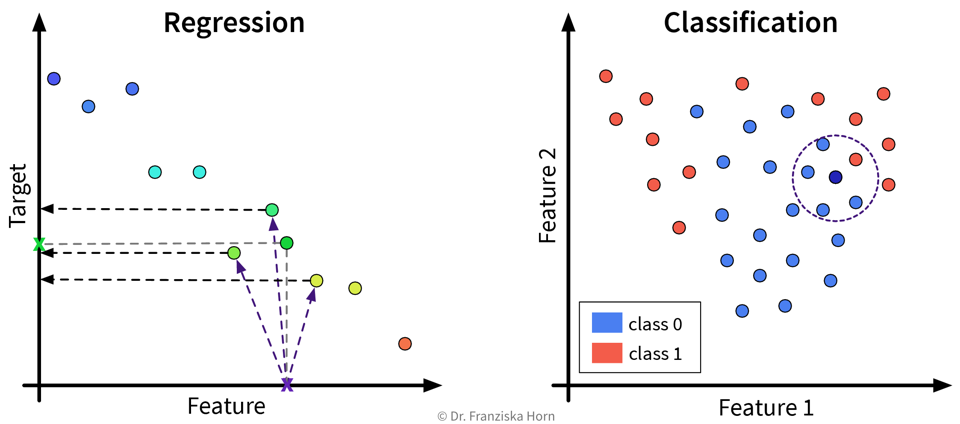k-Nearest Neighbors (kNN)

The first similarity-based model we’ll look at is k-nearest neighbors (kNN), which follows a rather naive and straightforward approach, but nevertheless often achieves a good performance on complex problems.
- Main idea
-
For a new sample, identify the k most similar training data points and predict the average of their target values / their most frequent class:

This kind of approach is also called Lazy Learning, since the model doesn’t actually learn any kind of internal parameters, but all the real computation only happens when we make a prediction for a new data point.
(When calling the fit-method on the sklearn model, a search tree is built to efficiently identify the nearest neighbors for a new data point.)
from sklearn.neighbors import KNeighborsRegressor, KNeighborsClassifierImportant Parameters:
-
→
n_neighbors: How many nearest neighbors to consider when making a prediction. -
→
metric: How to compute the similarity between the samples (default: Euclidean distance). -
→
weights: By setting this to'distance'instead of the default'uniform', the labels of the nearest neighbors contribute to the prediction proportionally to their distance to the new data point.
- Pros
-
-
Intuitive approach.
-
- Careful
-
-
Results completely depend on the similarity measure.
-